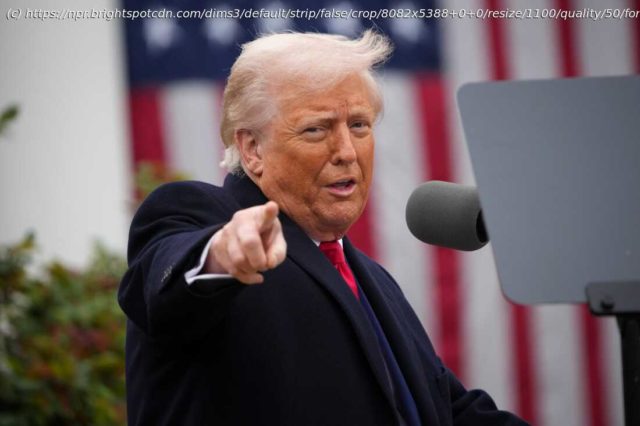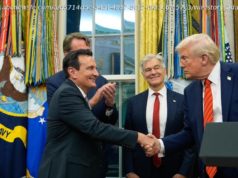Trump says his tariffs will spur America into a „golden age“ — but that remains far from certain. Here are 5 things to know about how his trade policies could impact the U.S. and the global economy.
When it comes to tariffs, President Trump is clear: America is winning.
As his administration imposes sweeping tariffs across the world, President Trump argues the import taxes will make America „great“ and „rich“, making the country once again the „most respected country anywhere in the world“, while ushering in a „golden age.“
But the reality so far is proving to be different.
Tariffs are sparking intense uncertainty in the U.S. and around the world — and it’s yet unclear how it will all end.
Here are five points that explain the effects of tariffs, from Main Street USA to China.The U.S. is starting to feel the effects
For months the full impact of Trump’s tariffs was not quite clear.
A big reason was because Trump did set some tariffs — including a 10% tax on nearly everything the U.S. imports — but he also delayed many others. Many companies also rushed to import things before tariffs kicked in, and then held off from passing on the full costs of the implemented tariffs to consumers.
But that’s starting to change.
Inflation is picking up, with both consumer inflation and a separate inflation gauge favored by the Fed showing prices increasing more than the previous month.
The labor market is also starting to show signs of cooling. A report by the Labor Department last week showed only 73,000 jobs were added in July, less than the 100,000 jobs economists had anticipated.
It got worse: the report said the U.S. had added a whopping 258,000 fewer jobs in the previous two months than first estimated. In response, Trump fired the top official who had been in charge of gathering the data, accusing herof having manipulated the numbers.
In addition to a cooling labor market, the economy is also growing more slowly. Data last week showed the U.S. gross domestic product grew much slower in the first half of this year than in the previous two years. But the full impact on the U.S. is not yet here
The effects of tariffs are likely to get bigger.
Trump has long claimed that tariffs will be paid for by countries that want to export to the country. In fact, most economists say that the tariff costs will likely be split: some of the costs will be paid by exporters overseas, some by importers in the U.S., and some by American consumers.
The Yale Budget Lab estimated last week that the average cost of Trump’s tariffs to the American household would be $2,400 this year, with clothes and textiles likely to see the biggest effects.
And contrary to Trump’s repeated claims that tariffs will boost the economy, experts believe the economy will get weaker, with higher inflation and slower job growth. And the weak labor market report last week will also likely spur more discussions about whether the economy could even enter a recession.






